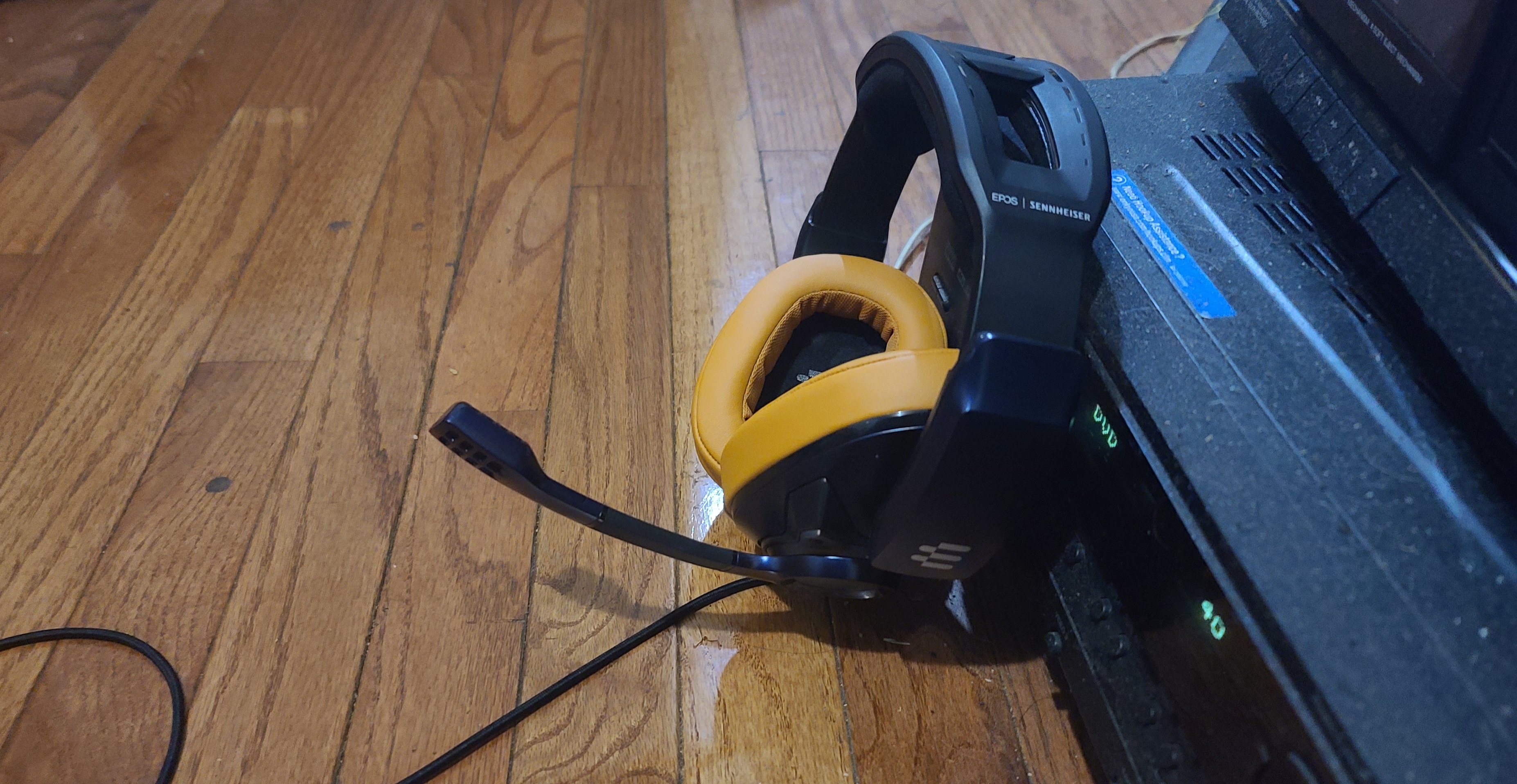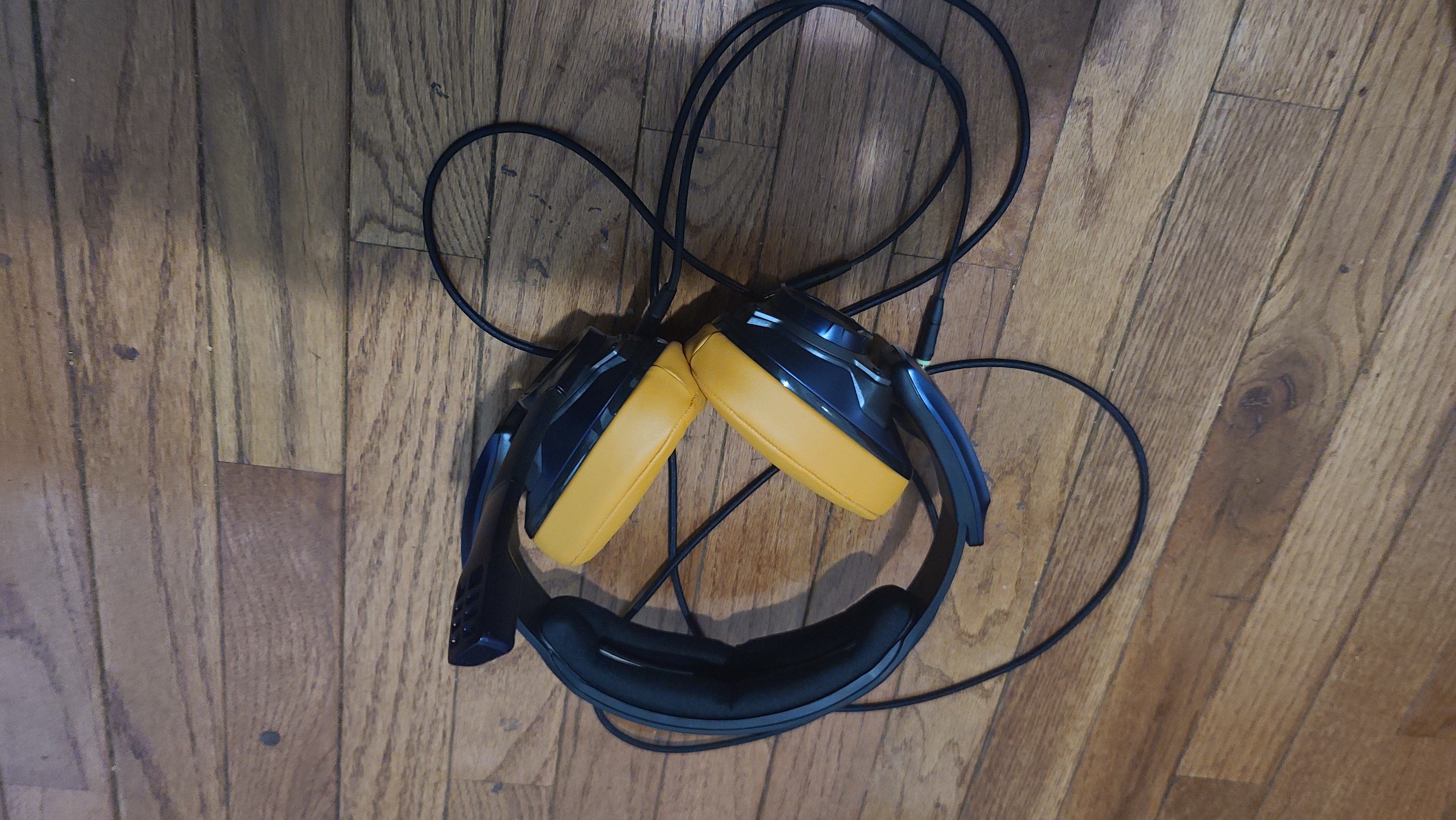Tom's Hardware Verdict
The EPOS I Sennheiser GSP 600 headset lineup is a valiant attempt at providing a simple, elegant, one-size-fits all solution for gamers looking for something higher end. Ease of use is great, but skipping features like tweaking software requires absolutely nailing the fundamentals. And the GSP 600 doesn’t do that.
Pros
- +
Excellent audio isolation
- +
Earcups fit snugly
- +
Extremely well-built
- +
Thoughtfully designed control layout
Cons
- -
Mic has poor low frequency response
- -
No tweaking software
- -
3.5mm only
Why you can trust Tom's Hardware
Sometimes it’s nice to have a peripheral that lets you just plug and play. Peripheral software can be tedious and annoying, and if a product works superbly out of the box, an app can become both unnecessary and burdensome. When it comes to the best gaming headsets, it’s particularly hard to find a satisfying plug-and-play package. And many audiophiles prefer the ability to tweak and tune to their preference or current environment.
The EPOS I Sennheiser GSP 600 (series of headsets ($219 MSRP as of writing) comes in three colors: GSP 600, GSP 601 or, the version pictured throughout this review, GSP 602. The cans are built with superior quality and comfort, and active noise cancellation is also impressively executed. But the cans forego software in favor of simplicity, and the audio quality isn’t strong enough on its own to go tweak-free. There are some thoughtful design choices here and there, but the GSP 600 taste likes decent bourbon priced like fine scotch.
EPOS I Sennheiser GSP 600/601/602 Specs
| Driver Type | 50mm neodymium |
| Impedance | 28 Ohms |
| Frequency Response | 10-30,000 Hz |
| Microphone Type | Unidirectional, noise-canceling |
| Connectivity | 2x 3-pole 3.5mm for PC, 1x 4-pole 3.5mm for consoles, |
| Weight (with mic) | 0.9 pounds (395g) |
| Cables | PC cable: 8.2 feet (2.5m); Console cable: 4.9 feet (1.5m) |
| Lighting | None |
| Software | None |
Design and Comfort
The GSP 600 series sports a closed-back design that will be familiar to most gamers – angular, with large earcups and a thick, adjustable, but non-removable boom arm.
Our review unit came in the blue and orange colorway and is dubbed the GSP 602 model. Here, the earcups are navy with a white EPOS logo stamped on the base of the hinge of the sturdy black headband. The cushioning contrasts with the color scheme’s darker hues. It’s bright orange, and made me wish for a more muted, complementary options. Some gamers may love this retro-futuristic color scheme but I am not one of them.
Thankfully, you can also get the cans in black with red accents or white with black accents and a touch of gold. And if you want more variety, the earcup covers are replaceable. EPOS sells them in black and brown.
Depending on your preference and colorway, looks may or may not be this headset’s strong suit. But comfort definitely is. The headband is padded at the top with a comfortable foam, and the earcup cushions are a thick, fake leather material that really hugs the ears. The fit is tight without feeling like a squeeze, and adjustments are easy to make via pushing or pulling on the earcup hinges. At no point during long sessions did the GSP 600 wobble – nor did it feel like it was clamping down too tightly on my head.
The controls on the GSP 600 are extremely simple, kicking off the headset’s barebones more stripped down approach. On the right earcup is a large volume wheel that’s beefy and offers plenty of resistance – a slight bump isn’t going to move the wheel. Meanwhile, the left earcup holds the boom arm for the mic, which also doubles as the mic’s on/off switch if you move the arm up or down. A satisfying click can be heard when the mic has been turned on or off. EPOS and Sennheiser did an admirable job of keeping the controls easy and intuitive to use.
Get Tom's Hardware's best news and in-depth reviews, straight to your inbox.
The headset connects to a PC via a split 3.5mm jack and can also connect to consoles via a single 3.5mm jack. Offering only 3.5mm connections fits with the ‘keep it simple’ design ethos, but offering essentially one connectivity type feels like a handicap, rather than decluttering. That’s especially true when there’s already more than one detachable cable and connector included. We’d love to see a USB Type-A or USB-C option here. Having more options isn’t a bad thing.
Audio Performance
The GSP 600’s audio performance is a bit of a mixed bag. Frequency response is specced for 10-30,000 Hz and features the same emphasis on low-end boost common in many gaming headsets. Without dedicated software to make adjustments, that has to be accepted, unless you want to spend time with a third party equalizer.
There are some situations to which the GSP 602’s voicing is extremely well-suited, such as bass-heavy music, movies with explosive action sequences and gaming that doesn’t rely on positional audio However, when applied to listening experiences that don’t play well with this EQ curve, the GSP 600 is simply average. When I compared a hip hop track to a rock one on the GSP 600 the difference was notable. The hip hop track benefited from the enhanced bass, and the rock track sounded muddy.
This voicing can be problematic for gaming, as well, depending on your genre of choice. For games where there is a lot going on aurally, like the DOOM and Battlefield series, and the success of the player is largely dependent on reading positional audio cues, detail can be lost in the headset’s booming bass. This can be mitigated with an equalizer, but, again, there isn’t one made specifically for these cans.
There’s also no virtual surround sound included with the cans. While this won’t be a major issue for more casual players and those who tend to think virtual surround adds an artificial quality, we’ve encountered successful uses of virtual surround sound that proved advantageous. And more and more gaming headsets, including many in the GSP 600’s price range, are making this an option.
On the other hand, games with more sparse soundscapes, think horror outings like Outlast or the Resident Evil series, sounded clean and crisp without sacrificing aural weight.
Something the GSP 600 series does extremely well is provide a buffer against outside noise. The earcups provided great noise isolation. There were no external distractions from gameplay.
Microphone
The GSP 602’s mic is also decidedly middle of the road.
For one, bass response is pretty muted. This helped combat boom and the popping sound that can come with ‘b’ and ‘p’ sounds. But my natural baritone voice sounded a bit on the thin and frail side.
Noise cancellation, however, was slightly above average. The mic tuned out ambient room and street noise to the point where it is barely noticeable. Clicky mechanical keyboards, on the other hand, were quite audible, due to the mic’s increased emphasis on mid to high frequency response.
There’s certainly nothing offensively bad about the GSP 600 series’ mic, but I expected more than an average gaming mic from a name as storied in high end audio reproduction as Sennheiser.
The mic on the headset is specced for a frequency response of 10-18,000 Hz.
Features and Software
The GSP 600 has no software or drivers; it’s a completely plug and play experience. While it is convenient to not have to configure anything, you also have to love the mic and audio quality you’ve got. The out-of-the-box sound quality is good, but I still missed having the ability to tweak performance to my liking.
Bottom Line
The EPOS I Sennheiser GSP 600 series of headsets strives to offer a high-end audio experience for gamers in an easy-to-use package. It nearly succeeds. but there are some significant hurdles in the way of its path to greatness.
On the positive side, the headset is thoughtfully designed. Controls are simple, intuitive, sturdy and well-placed. The GSP 600 is also extremely rugged, despite its plastic frame. Build quality is definitely a cut above average gaming headsets, and great care was taken to ensure the earcups provide maximum audio isolation. The GSP 600 also has an incredibly snug and comfortable fit that belies its bulky frame and makes it great for long gaming sessions.
Unfortunately, these positives are counterbalanced by what can best be described as a stubborn lack of flexibility. In endeavoring to simplify higher end gaming headsets, EPOS and Sennheiser boxed their product into a corner, especially with no tweaking software available. Simple sounds convenient until it becomes apparent that the default voicing of the speakers isn’t ideally suited to all game genres and uses. A flatter frequency response would have done wonders. And the mic, while above average, does little to make the case for its namesake’s pro audio heritage.
What you ultimately get is a well-made but stubbornly average gaming headset. Currently the GSP 602 colorway we reviewed and white GSP 601 are selling at $219, but we’ve seen the black version on sale for as low as $140.
This leaves the GSP 602 in a strange position. There’s very little reason to be recommended over more versatile products from competitors like the HyperX Cloud Core and SteelSeries Arctis 7 (both wireless), which are both price-competitive with the GSP 600 series, even at its aforementioned discounted price. Those offerings deliver better sound and more flexibility.
While the GSP 600 is not bad by any stretch of the imagination, it’s hard to recommend buying more for less.

Nate Rand is a freelance reviewer for Tom's Hardware US, covering gaming headsets, keyboards, mice, and microphones.
-
Chainsaw_NL The headset looks nice and fits my big head well. I combined it with the GSX 1000 soundcard. After a year of use i have a couple of problems with it. Other than the sound featured in the review it broke on a very thin part that connects the ear pieces to the headstrap. On both sides. I have had to remedy this with t-wraps to keep it together. Also the cloth is now loose. Otherwise it's still a pretty decent headset. But a little too pricey for the quality.Reply

